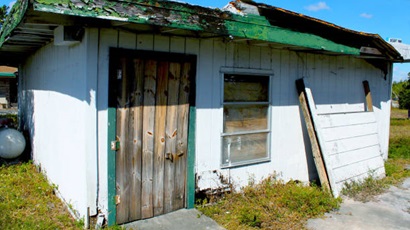Improvements are aimed at protecting agricultural workers and their families from potential hazards
Oregon OSHA is proposing significant changes to its safety and health rules for housing that employers provide to workers, most often in agricultural settings. The proposed rule changes are part of a comprehensive package of program enhancements aimed at protecting agricultural workers and their families and boosting employer compliance.
The division's agricultural labor housing (ALH) rule proposal is going through the public hearing and comment process before it is adopted. The proposed rules address the potential hazards in employer-provided housing. Oregon OSHA regulates such facilities from the perspective of workplace safety and health.
The rule proposal is part of a comprehensive set of reforms on how the division addresses ALH. Those reforms, which are in addition to the rule proposal, would be incorporated as part of the budget and other administrative processes. Altogether, the reform package includes:
- Rule changes that would substantially raise the protective standards for indoor and outdoor facilities that employers must include when they provide housing.
- Technical assistance to support the Oregon Department of Agriculture in providing $5 million in grant funds to growers for existing on-farm housing compliance with the rule change, and additional funding for infrastructure improvements once the existing grant funding is exhausted.
- Development of a new, annual self-certification requirement for employers that would be pursued through a budget proposal during the 2025 legislative session. If approved, it would complement future enhancements to the registration system by including more detailed information about each location's amenities.
- Establishment of a new seasonal ALH surveyor program to increase Oregon OSHA's ability to evaluate conditions at housing locations. The surveyor program would deploy seven seasonal surveyors to evaluate site conditions, attempt to gain compliance, and refer a site to Oregon OSHA's enforcement program if needed.
- Increased interagency coordination regarding issues affecting agricultural workers.
Renée Stapleton, administrator for Oregon OSHA commented: “Our comprehensive approach to ALH reflects the fact that this rule proposal must be accompanied by additional, program-level steps to bolster the safety and health of who we know are among our most vulnerable workers and families. And with all of these proposed changes, we are focusing on increasing protective measures while maintaining a stable operating environment for employers."
Andrew Stolfi, director of the Department of Consumer and Business Services, of which Oregon OSHA is a division states: “Worker protection is at the core of our mission. We know that we cannot achieve our mission simply by issuing regulations, which is why we are proposing a comprehensive, multi-agency approach to protecting some of our most vulnerable workers. We look forward to receiving public comment on these proposals."
Public hearings on the ALH rule proposal will follow a public comment period, which may be submitted by email at OSHA.rulemaking@dcbs.oregon.gov. The deadline for submitting comments and the public hearing schedule will be posted online on Oregon OSHA's
proposed rule and the
agricultural labor housing webpages.
A D V E R T I S E M E N T

A D V E R T I S E M E N T
The proposal's language –
available for review online in more detail – includes delayed effective dates for certain provisions, recognizing the need for time to prepare for the changes. The table shows the proposal broken down by category and year of implementation:
- Registration deadline is January 2025 to remove exception that housing provided for nonfood crops were not required to register, submit water testing results, and require sites in Initial registration to have no hazardous conditions.
- Facility Grounds proposed exterior/walkway lighting by January 2025 and remove livestock care exception by 2026.
- Laundry proposed tubs, trays and laundry machines and separate cleaning for contaminated clothes by 2026.
- Water testing results in language of occupants, and add arsenic and nitrates to well water testing frequency implemented by 2025. By 2026 require water pressure to be at least 20 psi.
- Bathing facilities with locking shower stalls by 2026, and private changing rooms by 2027.
- Toilets to include solid doors and handwashing with paper towels by 2025. Facilities must have 200 feet and provide 1:10 ratio for each gender
- Kitchens need protected food storage by 2025, and gas vented burners by 2026, and enclosed kitchens with plumbed sinks with hot and cold water by 2027.
- Housing must have mattresses with cleanable covers, and add safety measures including reporting diseases by 2025. Heating and cooling and electrical outlets in sleeping areas, and lockable storage by 2026. By 2027, provide at least 50 square feet per bed in sleeping rooms with bunk beds.
Oregon OSHA's announcement of the package of reforms follows a challenging multi-year, comprehensive review of its existing ALH requirements that included using a rulemaking advisory committee. The division garnered input from growers, agricultural associations, housing operators, and employee representative groups. For more information, go to
osha.oregon.gov.
--Donna Bleiler| Post Date: 2024-08-18 15:01:08 | Last Update: 2024-08-16 16:50:38 |







